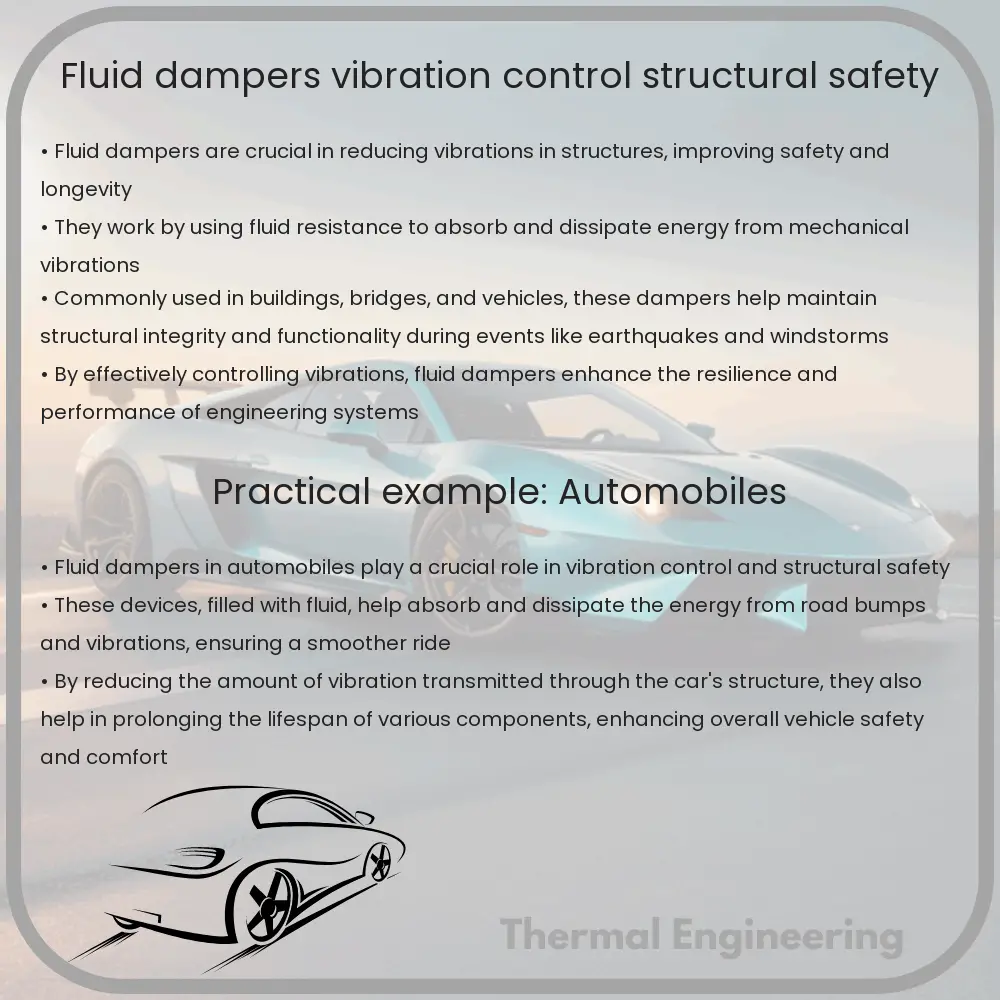Learn about fluid dampers, their functionality, types, and the crucial role they play in enhancing structural safety and controlling vibrations.

Understanding Fluid Dampers: Essential Tools for Vibration Control and Structural Safety
Fluid dampers, also known as hydraulic dampers, play a crucial role in engineering by providing vibration control which, in turn, enhances structural safety in various applications. From skyscrapers to automotive suspensions and bridges, the application of fluid dampers is wide-ranging and vital. Here, we delve into how fluid dampers work, their types, and the impact they have on controlling vibrations and ensuring safety in structures.
How Do Fluid Dampers Work?
Fluid dampers reduce the amplitude of vibrations using a fluid, typically oil, to absorb and dissipate energy. The basic principle involves a piston moving through a cylinder filled with fluid. As the piston moves, it displaces the fluid, forcing it through orifices or around obstacles, which converts the kinetic energy (movement energy) of the structure into thermal energy (heat), thereby dampening the motion.
- Viscous Damping: The fluid opposes the piston’s motion, providing a resistance that is proportional to the velocity of the motion. This is described by the equation F = -c*v, where F is the damping force, c is the damping coefficient, and v is the velocity.
- Compression and Expansion: The compression creates pressure within the damper, and managing this pressure through specially designed valves controls the resistance level and response of the damper.
Types of Fluid Dampers
Fluid dampers are categorized based on their construction and the operational behavior of the fluid within.
- Hydraulic Dampers: These are commonly used in automotive applications and heavy machinery. They provide stable damping characteristics and can be adapted for different conditions with adjustable settings.
- Magnetorheological (MR) Dampers: These contain a fluid that changes viscosity in the presence of a magnetic field, allowing for rapid adjustment of the damper’s stiffness and damping capacity. This feature is incredibly useful in adaptive suspension systems.
- Electrorheological (ER) Dampers: Similar to MR dampers, but the fluid’s viscosity changes in response to an electric field. These are less common due to their higher complexity and cost.
Vibration Control and Structural Safety
The primary purpose of incorporating fluid dampers into structures and machinery is to enhance vibration control, which directly impacts safety and durability. By mitigating the amplitude and frequency of vibrational energy, dampers:
- Protect Structural Integrity: Reducing stress on materials prevents fatigue and cracks, thereby extending the lifespan of the structure.
- Ensure Operational Safety and Comfort: In vehicles and buildings, reducing excess vibrations enhances comfort for users and stability during operations.
- Prevent Resonance Failures: Resonance, which can lead to catastrophic failures in structures like bridges and towers, is effectively controlled by tuning dampers to specific vibration frequencies.
The Future of Fluid Damping Technology
Advancements in material science and control systems are paving the way for the next generation of fluid dampers, which promise even greater control and adaptability to dynamic loads and environmental changes. Smart damping systems, which integrate sensors and adaptive control algorithms, are set to redefine how structures respond to natural forces like earthquakes and high winds.
In conclusion, fluid dampers are essential components in engineering that play a pivotal role in vibration control and structural safety. As technology progresses, their importance and capabilities are only set to increase, offering more sophisticated solutions to engineering challenges in dynamic environments.